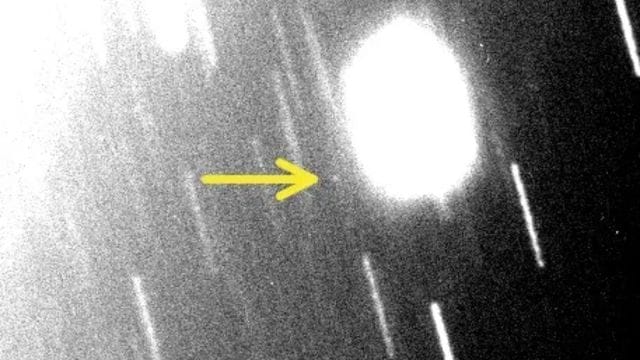Scientists find 3 previously unknown moons of Uranus and Neptune
Scientists have discovered a new Uranian moon after 20 years. They also discovered two new moons of Neptune.
 The new moon is a the small bright spot you see in the image where the yellow arrow is pointed. (Scott Shepard via Carnegie Science)
The new moon is a the small bright spot you see in the image where the yellow arrow is pointed. (Scott Shepard via Carnegie Science)With the James Webb Space Telescope peering into the depths of space, it wouldn’t be your fault if you imagine we know our own solar system very well. But you would be wrong. Scientists have discovered a new moon of Uranus after more than 20 years along with two new moons of Neptune, announced the International Astronomical Union’s Minor Planet Center.
“The three newly discovered moons are the faintest ever found around these two ice giant planets using ground-based telescopes. It took special image processing to reveal such faint objects,” explained Carnegie Science’s Scott S. Sheppard in a press statement.
With the latest addition, Uranus has 28 total moons. The latest measures only about 8 kilometres and is most probably the smallest moon of the planet. It takes 680 days to orbit the planet and has been named S/2023 U1. Just like with all outer satellites of Uranus, this will also be named after a character from a Shakespeare play.
Sheppard first spotted S/2023 U1 on November 4 last year using the Magellan telescopes at Carnegie Science’s Las Campanas Observatory in Chile. He then made follow-up observations a month later in December at the same facility. He worked with Marina Brozovic and Bob Jacobson of NASA’s Jet Propulsion Laboratory and looked at months of observations to detect a possible moon orbit for the find.
They were able to locate the new member of Uranus’s moon collection in older images that were taken in 2021 and also from images taken by the Subaru telescope in Hawaii. Sheppard also worked with the Magellan Telescope to find the brighter of the two newfound Neptunian moons. Sheppard also sued the Magellan Telescope to find the brighter of the two new moons of Neptune.
He then worked with David Tholen of the University of Hawaii, Chad Trujillo of Northern Arizona University, and Patryk Sofia Lykawa of Kindai University to find the other new Neptunian moon, which was an extremely faint object. It was discovered in September 2021 using the Subaru Telescope.







